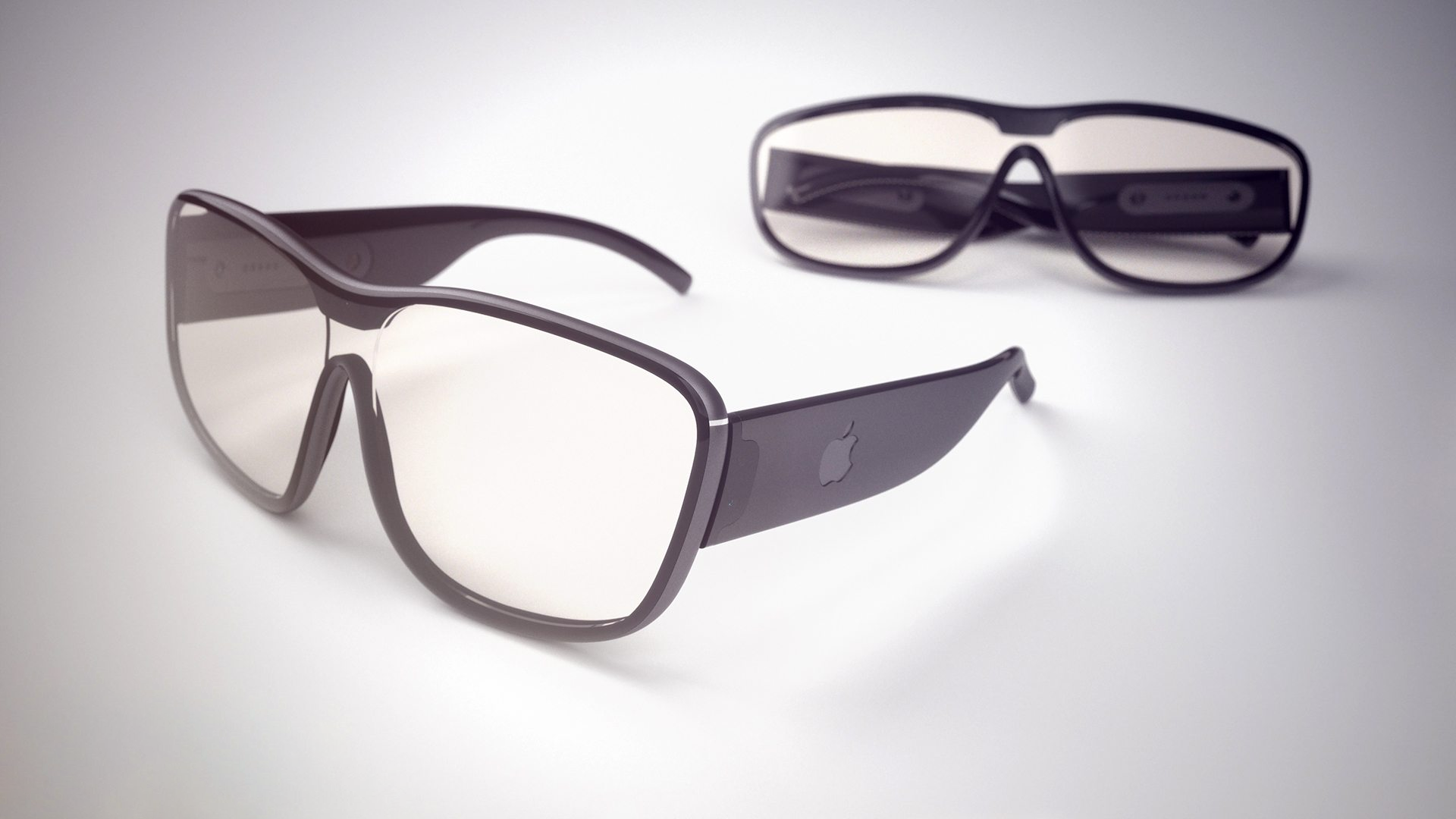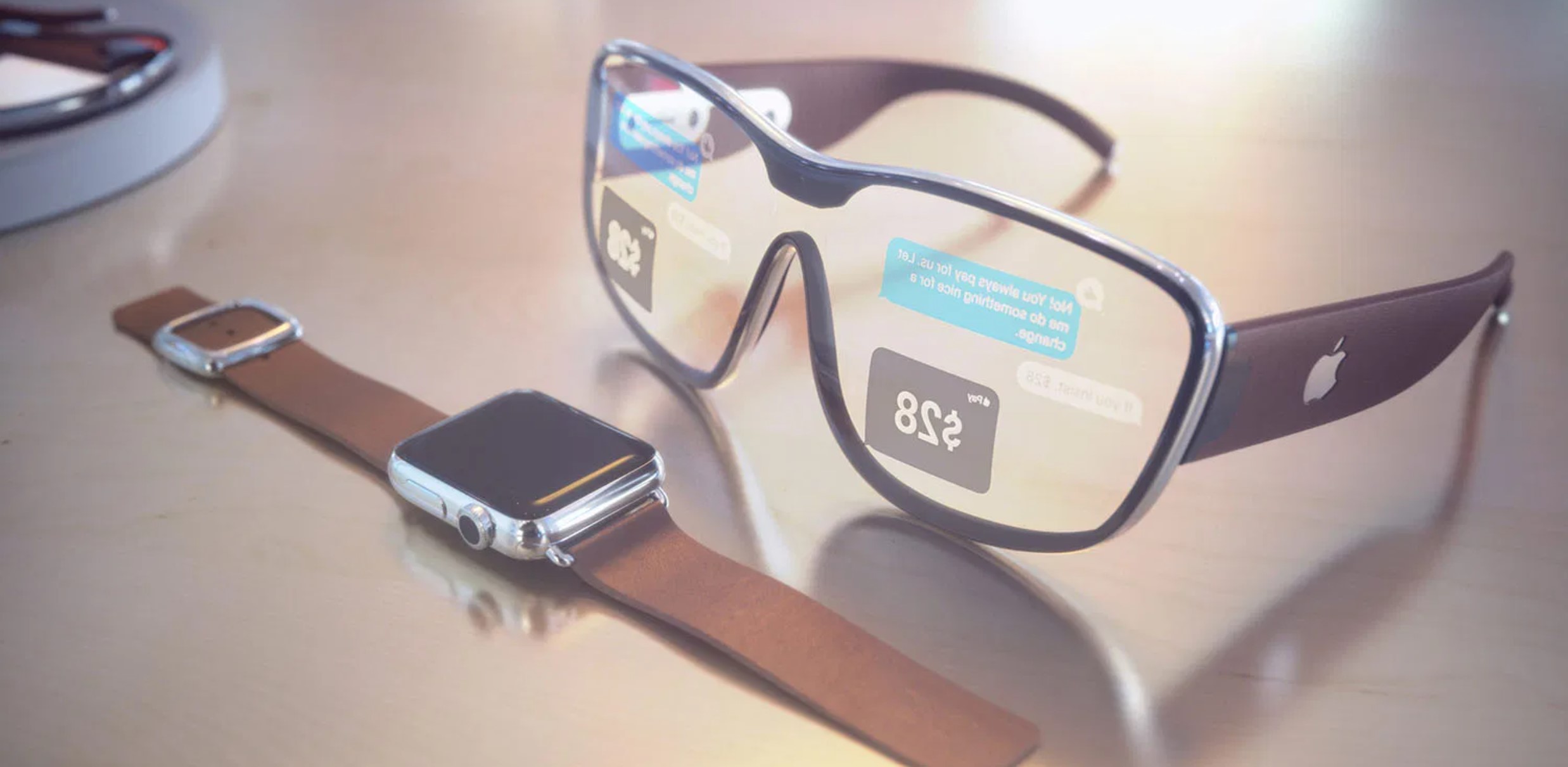
Of everything we've seen in 2024, smart glasses are proving to be a genuine hot property. While wearables such as Samsung's Galaxy Ring are making headlines and bringing the smart ring into the limelight, smart glasses — a wearable wonderkid a decade in the making — are also beginning to come into focus.
But how do you know that a product is likely to force its way into the mainstream and become one of the next must-have devices for years to come? Well, there's market speculation from well-established analysts or a growing buzz among tech outlets. However, there's also potentially the biggest nod towards the success of any given device, the news that Apple is making one too.
Apple once sneered and derided its competitor's initial efforts at bringing smart glasses to the consumer market, but, ten years removed from the ill-fated Google Glass, the company is currently committed to releasing its own smart glasses, and it could lead to the mainstream moment this wearable has been waiting for.
Apple smart glasses: What we know
While Apple is a company well known for having any number of irons in the fire at one time, we can never say for certain that its behind-closed-curtains collection of in-the-works projects will materialize into anything that lands on store shelves.
However, when it comes to smart glasses, things are looking ever more likely to progress with Bloomberg's resident Apple auteur Mark Gurman highlighting Apple's commitment to the project in his latest Power On newsletter.
The long-standing "Apple Glass" rumors will seemingly take their first steps into realization as Apple's Vision group continues to expand on the company's new face-worn focus that kickstarted with this year's release of the Vision Pro.
However, while the Vision Pro immediately dove into the deep end of high-tech headsets, offering one of the most premium experiences we've seen so far, Apple's first venture into smart glasses could be a much more modest matter.
Apple smart glasses: What to expect
While it's long been the rumor that Apple is looking towards developing a pair of "true" AR smart glasses, Gurman states that "true augmented reality glasses has been tabled due to technical challenges," the company's first pair of smart glasses could more clearly resemble the Meta Ray-Ban Smart Glasses, which released in October last year.
Meta's frames refine the smart glass experience by offering a Bluetooth and Wi-Fi-enabled pair of Ray-Ban's iconic Wayfarer sunglasses that offer touch capacitive controls for handling calls and music playback through open-ear speakers, housed directly within the temples of the frames.
If Apple hopes to emulate Meta's success in this market, then it's more than capable of providing a similar, if not superior, experience.
Taking this another step further, the Meta Ray-Ban smart glasses also feature a built-in ultrawide 12-megapixel camera and multi-mic system for image and video capture from the first-person perspective.
However, the cherry on top of Meta's smart glasses came with the arrival of Meta AI, which allowed hands-free access to the company's premier multi-modal AI chatbot. Wearers can interact with Meta AI through natural language prompts in a similar way to smart home assistants. Simply saying "Hey Meta..." activates the onboard assistant allowing wearers to engage with the AI.
The AI can also access the glasses' camera to comment and respond based on real-world visual inputs such as translating foreign languages, helping to choose outfits, and giving you more information on landmarks or works of art.
If Apple hopes to emulate Meta's success in this market, then it's more than capable of providing a similar, if not superior, experience.
Apple's smart glasses could draw upon the tech housed a wide range of Apple products to emulate any number of features the Ray-Ban Meta Smart Glasses offer to complete one of the most well-rounded smart glasses offerings we've seen to date.

Apple smart glasses: What we'd like to see
The first generation of Apple smart glasses would do well to draw inspiration from the audio excellence of the AirPod together with the iPhone's quality camera offerings while making great use of the company's all-new Apple Intelligence AI — not to mention the long-awaited AI Siri overhaul expected to release next year.
Where Apple could go one further is to double up the camera offerings, allowing wearers to capture spatial images and video in full 3D, something already implemented into iPhone 15 models.
Smart glasses also allow for various health and lifestyle tracking capabilities like those features in the Solos AirGo 3, which offers step tracking, posture reminders and correction from its built-in gyroscope, and even an optical heart rate sensor hidden inside one of its temples.
With health and fitness tracking becoming one of Apple's major focuses with the Apple Watch, it's likely that we could see the company adopt a similar approach for its smart glasses.
This would not only expand on what its smart glasses could offer wearers but also help to set the foundations of a future "all-in-one" wearable that could viably replace the iPhone once Apple figures out how best to implement displays into this product.
Will Apple smart glasses replace the iPhone?
It was 2007 when Steve Jobs took to the stage to reveal the iPhone to the world for the first time. Since then, we've seen Apple's smartphone refined, reformed, and redesigned countless times through innovation and invention.
However, over fifteen years on from this landmark announcement, we're finally staring down the barrel of a product that could eventually see the smartphone dethroned as the everyday computing companion.
Likely, this first generation of Apple smart glasses won't be the one to complete such a Herculean task, but the company's "true" AR glasses could well be the ones that pave a new path ahead for personal tech.
Even Meta CEO Mark Zuckerberg believes the eventual release of "true" AR glasses is a "Holy grail" moment in tech, and that's something he and his company are being heavily linked with showcasing as early as later this year.
That being said, Apple's first-generation smart glasses may include a cellular and Wi-Fi option, similar to its iPad and Apple Watch offerings. Thanks to the sleuths at Patently Apple, we already know that Tim Cook and Co. are exploring how best to outfit its future glasses with cellular antennas.
While it's unlikely that anyone will be ditching their iPhone for this first-generation device, it seems highly likely that it will be available as a stand-alone device of its own, and not brought to market as an accessory that is iPhone dependent. As for how future iterations are adopted, especially "true" AR glasses, that remains to be seen.
When can we expect them?
With so much potential to be found in Apple's upcoming smart glasses, it's only natural to want to know when we can expect them to release.
While we can't say for certain they will, insiders and analysts believe they're on their way, with the reputable Ming-Chu Kuo believing that a 2026 release date is possible, with Metalens production likely allowing for Apple to chase its "true" AR glasses dream further down the line.
An even more positive prediction comes again from Blomberg's Mark Gurman, who believes we could see Apple's smart glasses arrive by the end of 2025.
Of course, these dates should be taken with a healthy amount of salt, as Apple is no stranger to abandoning projects or delaying them until they're completely satisfied with the end result.
However, with a more stripped-back approach to its smart glasses on the cards, leaving AR out of the equation for the time being, it's very likely that Apple can follow through on its ambitions in a faster manner and capitalize on the growing popularity that this form of wearable has to offer.







